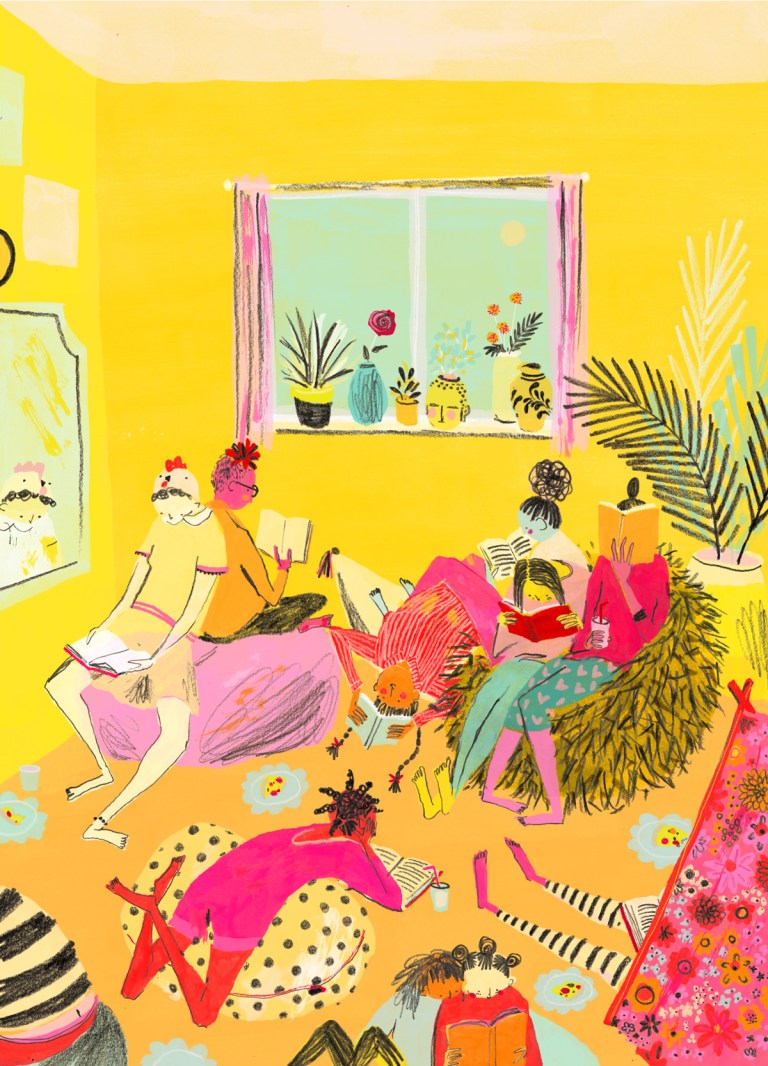By Maria Popova: Brain Pickings.
Maria Popova is a Bulgarian born New York based polymath who has read everything so the rest of us don’t have to. Not just hyper intelligent, she has an uncanny eye for beauty combined with a deeply felt sense of what makes us human.
Born in 1985, her beautifully written book Figuring, a study, in essence, of the loneliness of genius before the internet age, was a major literary event.
We unreservedly recommend her literary blog Brain Pickings.
Here is one of her most recent pieces. The original version can be found here. Illustrations are from the book The Velocity of Being: Letters to a Young Reader, for which Maria Popova wrote the introduction.
“Crisis… is an attempt to dislodge us from a toxic status quo and constitutes an insistent call to rebuild our lives on a more authentic and sincere basis.”
The moment we begin to see that there are infinitely many kinds of beautiful lives, we cease being captive to the myth of normalcy — the cultural tyranny that tells us there are a handful of valid ways to be human and demands of us to contort into these accepted forms of being. But the great hoax is that they are Platonic forms — the real reduced beyond recognition into the ideal, an ideal too narrow and symmetry-bound to account for the spacious, uneven, gloriously shambolic reality of being what we are.

With his characteristic eloquence and sensitivity, Alain de Botton offers a mighty antidote to that mythos in a portion of The School of Life: An Emotional Education (public library) — the book companion to his wonderful global academy for skillful living, which also gave us De Botton on what emotional intelligence really means and how to move through rejection. He writes:
Any idea of the normal currently in circulation is not an accurate map of what is customary for a human to be. We are — each one of us — far more compulsive, anxious, sexual, tender, mean, generous, playful, thoughtful, dazed, and at sea than we are encouraged to accept.

Given how opaque we are to ourselves most of the time, how encased our rawest emotional reasons are in elaborate cathedrals of rationalization, we struggle to imagine that anyone else could possibly see, understand, and accept the dazzling complexity with which we live inside. “Does what goes on inside show on the outside?” the young Van Gogh wrote to his brother. “Someone has a great fire in his soul… and passers-by see nothing but a little smoke at the top of the chimney.” Meanwhile, we move among other chimneys — all the taller built by the artful self-masonry of social media — from which we intuitively infer, even if we rationally understand this to be an illusion, that the fires burning in others are far tamer than those roiling in us; that they live with far lesser levels of confusion and complexity; that we are, in other words, not normal by comparison.

De Botton writes:
We simply cannot trust that sides of our deep selves will have counterparts in those we meet, and so remain silent and shy, struggling to believe that the imposing, competent strangers we encounter can have any of the vulnerabilities, perversions, and idiocies we’re so intimately familiar with inside our own characters.
A healthy culture, he suggests, calibrates this mismatch of perception and reality by inviting us into the inner worlds of others, worlds just as shambolic as ours — worlds into which literature uniquely invites us.

In those moments when our culture fails to calibrate our insecurities and instead assails us with its mythos of normalcy, in those moments when we lack the psychological skills and emotional resources to face our elemental vulnerabilities with equanimity, tenderness, and patience, we might experience a breakdown. With his singular talent for consolatory perspective-pivoting, De Botton suggests that a breakdown is not a failure of our growth-process but assuring evidence of our ongoing search for better understanding and tending to ourselves:
A breakdown is not merely a random piece of madness or malfunction; it is a very real — albeit very inarticulate — bid for health and self-knowledge. It is an attempt by one part of our mind to force the other into a process of growth, self-understanding and self-development that it has hitherto refused to undertake. If we can put it paradoxically, it is an attempt to jump-start a process of getting well — properly well — through a stage of falling very ill.
[…]
In the midst of a breakdown, we often wonder whether we have gone mad. We have not. We’re behaving oddly, no doubt, but beneath the agitation we are on a hidden yet logical search for health. We haven’t become ill; we were ill already. Our crisis, if we can get through it, is an attempt to dislodge us from a toxic status quo and constitutes an insistent call to rebuild our lives on a more authentic and sincere basis. It belongs, in the most acute and panicked way, to the search for self-knowledge.

FOR MORE INFORMATION:


